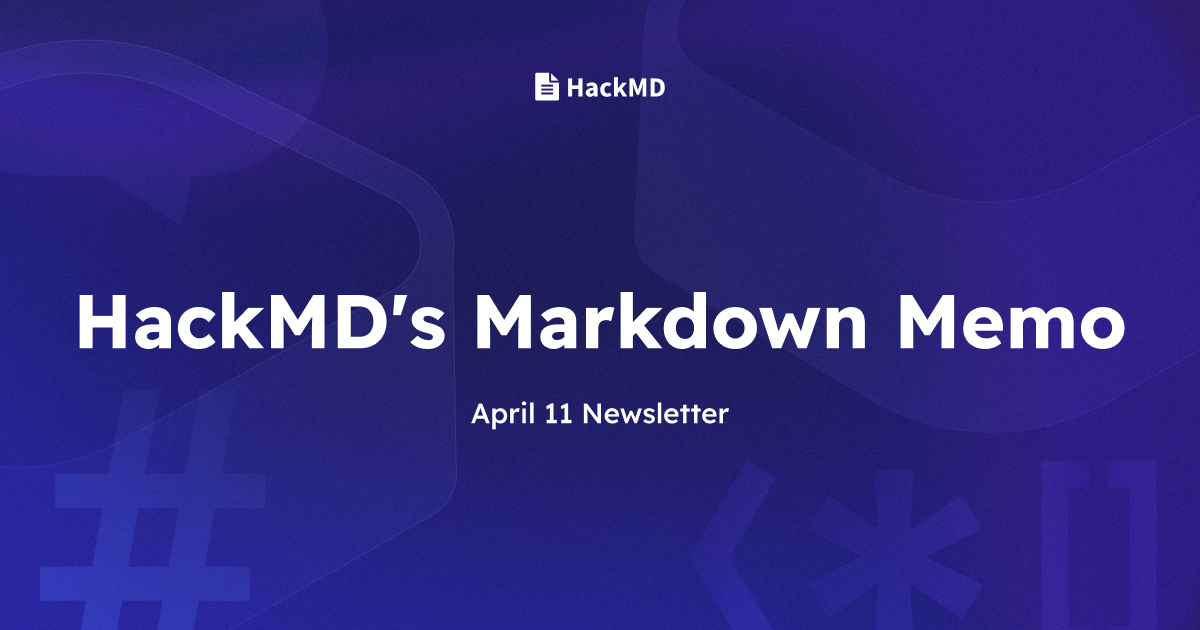Welcome back to the latest edition of the Markdown Memo. 👋
This month, along with featuring the latest industry news, informative blogs, and community voices we’re highlighting how you can leverage your Profile in HackMD as a central source of truth for your community.
In fact, all of the ‘Visionary voices’ below have a rich repository of resources and documents in their Profiles. Simply click their username at the top left of their page to explore more.
🌟 Visionary voices
- Vitalik Buterin, co-founder of Ethereum, detailing the next steps in the Purge.
- @wbnns from Base highlights how to restore a Base Node from snapshot and how to run a Base Node in the same environment as an L1.
- Sam Williams, founder of Arweave, diving into Protocol Specification of the
aoComputer. - Buo-ren, Lin unveils how to build your own Python documentation and created a resource for earthquake disaster information 💙.
📄 Product updates
Kick-start collaboration with Profiles
The key to collaboration is creating a central source of truth.
For both teams and individuals building with HackMD, a dedicated workspace is provided for organizing and housing all internal documents.
But what if you want to share select notes or information publicly? Posting links across your social platforms is an option, but what if there was a more efficient way to manage all your public notes?
There is.
Enter: Profiles
🖋️ From the blog
HackMD vs Notion: Choosing the right tool
Developers juggle countless moving pieces.
For them, tooling is not a convenience, but a vital component in the workflow. We know this.
That’s why HackMD prioritizes developer-centric features, making it ideal for efficient and effective technical documentation. But how does HackMD stand up against other tools like Notion? We dove into some of the factors to consider when deciding between the two.
Crafting an effective RFC
Request For Comments, or RFCs, serve as the cornerstone of innovation, providing a platform for individuals to propose, refine, and standardize ideas that shape the digital landscape.
We uncovered the process of creating an RFC document. Specifically…
- Knowing when (and when not) to write an RFC
- Defining the purpose and scope
- Researching your problem
- Structuring your RFC and what to include in each section (!)
- Sharing your work with key stakeholders
Click here to learn how to craft an impactful RFC.
📰 Industry news and trends
- Python skills ‘increasingly essential’ to dev teams venturing into advanced AI.
- The AI race heats up as OpenAI, Google, and Mistral release new models.
- Based culture: Inside Coinbase’s L2 feat.
- GitHub updates Innovation Graph with latest developer trends.
- How RWAs in web3 are impacting the consumer experience.
- Grafana Labs releases Grafana 11, Loki 3.0, and a new open source project called Grafana Alloy.
- Four ways GitHub engineers use GitHub Copilot.
- Ethereum and L2s on track to beat Bitcoin for active addresses.
Do you have an article or paper you’d like featured in the Markdown Memo? We’d love to hear from you! Tag us on Twitter or share it in Discord.
Until next time…
We can’t wait to see what you create.
